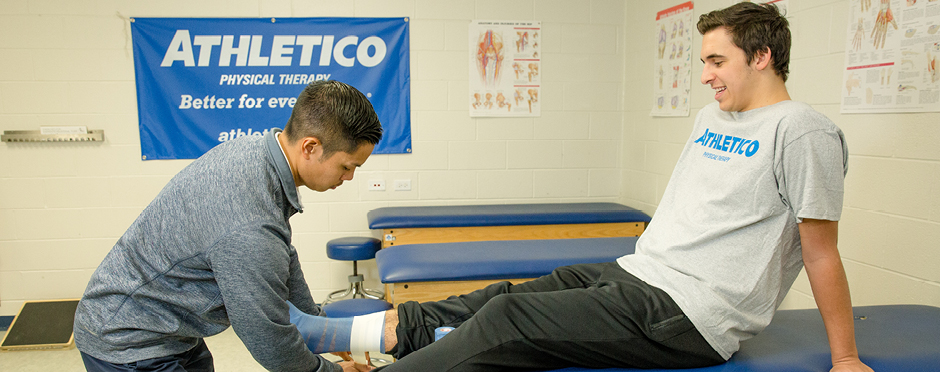
12 Things You May Not Know About Athletic Trainers
1 CommentMarch is not only a time for the weather to get warmer, it’s also National Athletic Training Month!
If you’ve been at an interscholastic event, you’ve likely seen an athletic trainer at work and probably didn’t even know it. The National Athletic Training Association (NATA) states that “athletic training encompasses the prevention, examination, diagnosis, treatment and rehabilitation of emergent, acute or chronic injuries and medical conditions.” 1
Every year the NATA has a theme for National Athletic Training Month. In 2017 the theme was – “ATs Are Health Care” To help celebrate the month, check out these facts that you may not know about athletic trainers:
1. Athletic Trainers may have either a Bachelor’s or Master’s degree. By 2020, all CAATE accredited programs will be offered at the Master’s level only. Upon completion of their education, an athletic training student will sit for the Board Of Certification (BOC) exam, which covered everything that was learned in their schooling. Passage of the BOC is a requirement of practice of athletic training in most states.
2. The American Medical Association, Health Resources Services Administration and the Department of Health and Human Services recognize Athletic Training as an allied health care profession.
3. Athletic Trainers are licensed/regulated in 49 states and the District of Columbia.1
4. Every two years athletic trainers are required to complete 50 Continuing Education Units to maintain their athletic training certification with the BOC.
5. Athletic trainers aren’t just at high schools, colleges and youth sporting events. A few of the other settings you can find these professionals include physician offices, health care administrations, law enforcement, theaters, industrial sites and the military.1
6. The Athletic Training Profession started in the 20th century and the National Athletic Trainers’ Association (NATA) was founded in 1950.2
7. Athletic Trainers can apply for a National Provider Identifier (NPI)as mid-level health care professional. The NPI is a unique, 10-digit identification number issued to health care providers in the U.S. by the Centers for Medicare and Medicaid Services.
8. Athletic trainers abide by HIPAA laws just like all medical professionals. An athlete’s injury (and recovery) is between the athlete, the athletic trainer, a parent/guardian if the athlete is under 18 and a doctor (if the athlete is seeing one).
9. The priority of athletic trainers is to protect the athletes they work with. Their goal is to help athletes get back to 100 percent health as fast and safely as possible.
10. Athletic trainers get just as excited for game days as athletes do! They may even have their own “game day rituals.”
11. Athletic trainers do a lot of “behind the scenes” work. Some of the duties outside of game time assistance include organizing physicals and assist with administrative duties, keeping meticulous notes on injuries, and pre- and post-game/practice treatments.
12. Athletic trainers are here to help everyone on the teams they work with!
Celebrating NATM
Athletico Certified Athletic Trainers are highly skilled and educated health professionals who work to provide optimal health care to athletes. If your organization is in need of an athletic trainer, please click the button below.
The Athletico blog is an educational resource written by Athletico employees. Athletico bloggers are licensed professionals who abide by the code of ethics outlined by their respective professional associations. The content published in blog posts represents the opinion of the individual author based on their expertise and experience. The content provided in this blog is for informational purposes only, does not constitute medical advice and should not be relied on for making personal health decisions.
References:
1. “Athletic Training”. NATA, https://www.nata.org/about/athletic-training. Accessed 20 February 2017
2. National Athletic Trainer’s Association, Profile of Athletic Trainers. 2016 https://www.nata.org/sites/default/files/profile-of-athletic-trainers.pdf

1 Comment
Dees, Desaray
Thank you for the good info for my school project